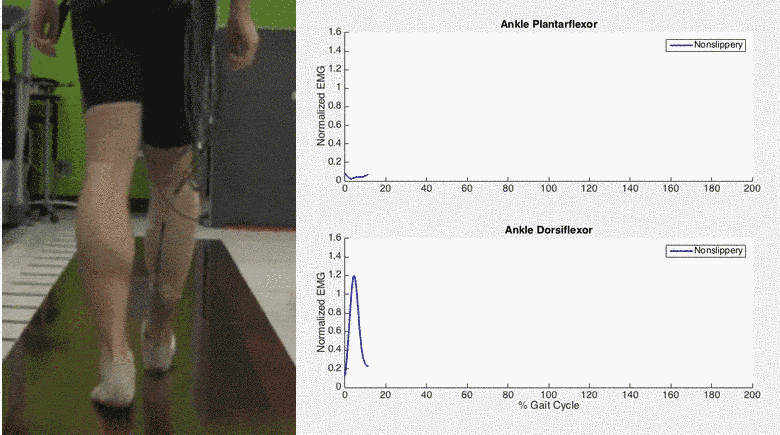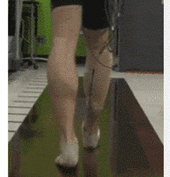
Mariah W. Whitmore, Levi J. Hargrove, Eric J. Perreault, Northwestern University, Rehabilitation Institute of Chicago, USA
The ability to change gait patterns in the presence of a slippery surface is essential for minimizing the risk of a slip and fall. For individuals with a lower-limb amputation, changes to their gait pattern are constrained by the dynamics of current prosthetic limbs, which do not naturally adapt to different surface conditions. Recent advances in prosthetic control might enable some of these natural changes to occur, but first we need to understand what the appropriate changes are for intact legs. We investigated the changes in lower-limb muscle activity and kinematics in able-bodied subjects walking at steady state without slipping over different types of slippery walkways. We captured the changes that occurred for moderately slippery surfaces that are commonly encountered, such as smooth hardwood floors, and those for very slippery surfaces that resemble ice. The results for eleven able-bodied subjects showed distinct changes in muscle activity across the lower-limb on the slippery walkways. For distal musculature spanning the ankle, there was a significant decrease in muscle activity as the walkway became more slippery. This likely resulted in a compliant distal joint that facilitated full contact between the foot and the slippery surface. More proximal musculature at the knee and hip showed significant increases in activity on the slippery walkways. This resulted in increased knee and hip flexion, which likely lowered the body’s center of mass and increased stabilization of the proximal leg and trunk. These findings suggest a proximal-distal gradient of control in muscle activity across the leg that could inform the future design of adaptable prosthetic controllers.
Keywords: Electromyography, gait, limb impedance, prosthetic limbs, slippery surfaces

